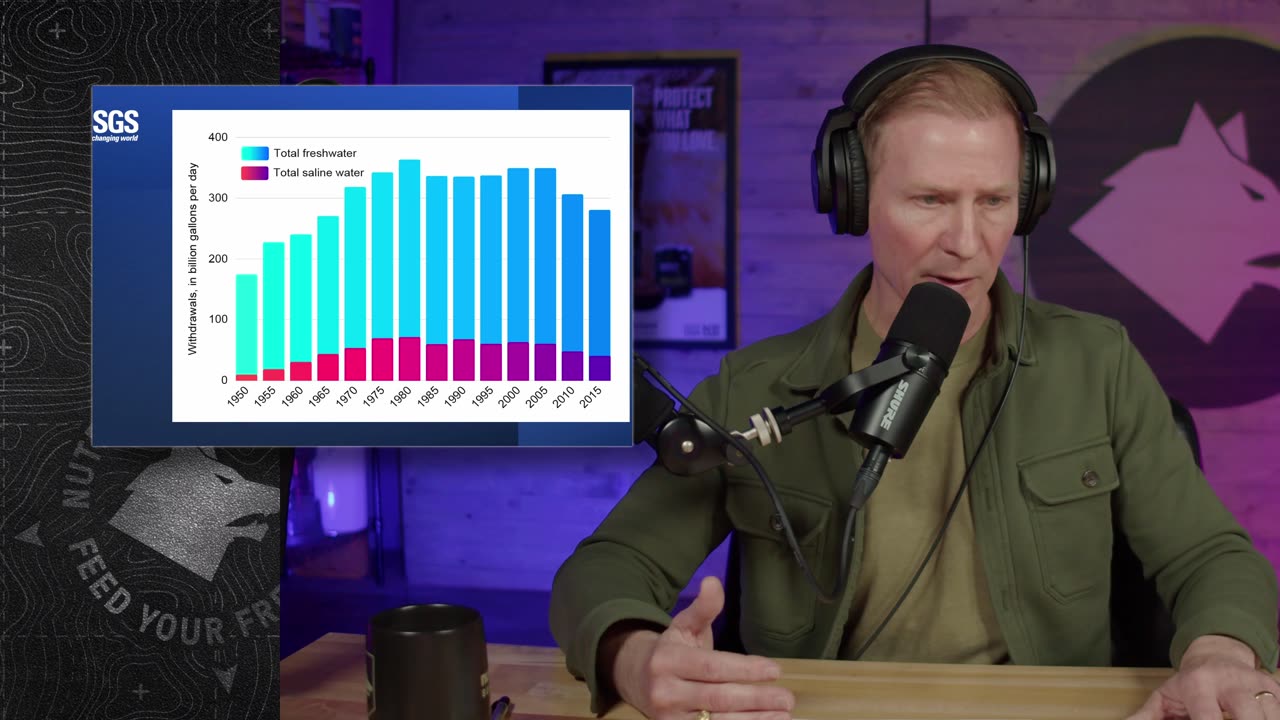Premium Only Content

Water Shortage in the West - Colorado River Plan
The Colorado River Plan is a set of guidelines and agreements aimed at managing the use and allocation of water resources in the Colorado River Basin. It was developed by the seven states in the Basin, in conjunction with the federal government, to ensure a sustainable and reliable water supply for the growing populations and industries in the region, while also protecting the environment and preserving recreational opportunities. The plan addresses issues such as water supply, water quality, drought, and the allocation of water to various users, including cities, agriculture, and the environment.
The seven states in the Colorado River Basin:
1. Arizona
2. California
3. Colorado
4. Nevada
5. New Mexico
6. Utah
7. Wyoming
These states, along with the federal government, work together to manage the use and allocation of water resources in the Basin to meet the needs of growing populations and industries, while also protecting the environment and preserving recreational opportunities.
Rainfall patterns in the USA are complex and can vary greatly depending on location, season, and climate. In some regions of the country, such as the Southwest, rainfall has decreased over the past several decades due to long-term drought conditions, while other areas have experienced increased rainfall. Climate change is also expected to impact precipitation patterns in many parts of the country in the future.
Overall, it is not accurate to say that rainfall is decreasing across the entire USA, as precipitation patterns can be highly variable and complex. However, it is important to note that long-term trends in precipitation, as well as the impacts of climate change, are areas of active research and concern.
Water usage in the USA has generally been in decline over the past few decades. This trend can be attributed to a combination of factors, including increased efficiency in water use and management, better technology for water treatment and distribution, and changes in land use and economic activities.
However, water usage can vary greatly depending on factors such as location, season, and economic conditions. For example, some areas may experience increased water usage during periods of drought or due to population growth, while others may see a decline in usage due to conservation efforts or changes in land use patterns.
Overall, while water usage in the USA has been in decline in recent decades, it remains an important and complex issue, with ongoing efforts to ensure sustainable and efficient use of this critical resource.
Here are some of the best ways to store water for emergencies:
Store-bought water containers: You can purchase food-grade plastic containers specifically designed for water storage. These containers are durable, easy to use, and can be resealed.
Reusable plastic bottles: You can use clean and empty plastic soda bottles or sports water bottles to store water. Make sure to thoroughly clean the bottles before use.
Glass containers: Glass containers with tight-fitting lids, such as mason jars, can also be used to store water. However, they can be heavy and may break if not handled carefully.
Water bladders: Water bladders are made of durable plastic and come in a range of sizes. They are lightweight, easy to store, and can be filled from a tap or hose.
Regardless of the container you choose, it's important to label the containers with the date and type of liquid stored to ensure the water remains safe to drink. It's also recommended to replace stored water every six months.
-
 12:12
12:12
The Shannon Joy Show
12 hours ago🔥Carcinogens & Fetal Cells In Your New ‘Universal Vaccine’🔥
5422 -
 10:38
10:38
ariellescarcella
11 hours agoOnlyFans Models Fake Being Trans : Queer Activists Are PISSED
86 -
 8:00
8:00
Congressman Eli Crane
15 hours agoThe D.C. Crime Problem | Democrats' Greatest Lies – Vol.2
17.1K9 -
 17:54
17:54
Dr Disrespect
17 hours agoDR DISRESPECT vs VAN DAMME in Hitman 3
72.8K11 -
 2:05:26
2:05:26
Side Scrollers Podcast
19 hours ago4Chan SUES UK Government + Craig Has Mental Illness Fatigue + Knight Rider REBOOT | Side Scrollers
32.4K8 -
 19:26
19:26
GritsGG
1 day agoChat Picked My Hair Color! All Pink Loadout & Operator Challenge!
28.3K4 -
 10:32
10:32
Nikko Ortiz
1 day agoFunniest Fails Of The Month
56.7K8 -
 1:27:34
1:27:34
TruthStream with Joe and Scott
4 days agoArchitect Richard Gage: 911 truths and more #482
32.7K8 -
 LIVE
LIVE
Lofi Girl
2 years agoSynthwave Radio 🌌 - beats to chill/game to
195 watching -
 56:48
56:48
The HotSeat
15 hours agoI'm NOT Sorry! Guns Aren’t the Problem—Godless Culture Is
37.2K30